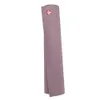Forget weights — improve your running with these 3 bodyweight strength exercises
Three muscle-building moves for runners

Runners, as much as it may seem like a chore, keeping up with practicing the best strength exercises to improve your running performance is an essential part of being a runner. But to keep things easy, you can begin to tackle strength training with just three no-equipment exercises.
This short routine comes from running physio and coach Jimmy Pipe on Instagram, where he shares useful tips and exercises for runners to improve their performance and protect their limbs.
These three specific exercises aim to prevent common muscle tightness or aches and pains that you may be suffering from on your runs. And you don't need any weights or technical equipment, so you can do them wherever you want, whether that's in the comfort of your home or at the local park.
Three-move runners strength workout
As a keen runner myself, I have been following Pipe's running advice for a while now and want to share the beauty of how easy it can be to strengthen important muscles to keep your body in top running condition.
The following sequence of exercises will help to strengthen your quads, glutes, calves and hips. This will help improve your running efficiency, power generation, stability, and injury resilience, ensuring improved performance and longevity in your running journey.
Aim to do 8-12 repetitions of each move, and you can practice your technique with Pipe's demonstrations before starting to ensure you are practicing the exercises with the correct form, get the most from your training, and avoid injury.
Watch Jimmy Pipe's three-move runners strength workout
A post shared by Jimmy Pipe | Running Physio + Coach (@jimmypipe_running)
A photo posted by on
Reverse Nordic
In Pipe's demonstration, you can see him starting off this exercise in a kneeling position. We like to roll out one of the best yoga mats when performing a floor based move like this to help keep our joints protected against the hard ground.
Sign up to get the BEST of Tom's Guide direct to your inbox.
Get instant access to breaking news, the hottest reviews, great deals and helpful tips.
Next, Pipe slowly leans back, hinging at the hips and keeping his torso straight. He lowers his body as far back as possible until he reaches his range of motion before using his hamstrings and glutes to pull himself back up to the starting position.
Step downs
Pipe performs this move on a box, but a strong and sturdy chair can be subbed in if you are trying this at home. He starts by stepping onto the box with one foot, ensuring his entire foot is planted onto the surface.
He engages his core, keeps his chest lifted and maintains a neutral spine. Then Pipe slowly lowers the other foot down towards the ground, bending at the knee and hip of the supporting leg (on the box/chair).
He lowers until his other foot touches the ground before pushing through the heel of the supporting leg to return to the starting position. That's one repetition.
Calf raises
If you own a weight plate this is what Pipe is using for the calf raises. But if not, you can just use the floor or a wide hardback book. Pipe can be seen standing with one foot on the raised surface and the heel of that foot hanging off.
The other foot is hovering next to it, not touching the surface or ground. Then he slowly raises his heel that is on the surface as high as possible, pushing through the ball of the foot.
Focus on contracting the calf muscle as you perform the movement and hold this for a brief moment at the top of the exercise. Pipe lowers his heel back down. That's one repetition, so repeat until you complete the set.
What are the benefits of each exercise?
Reverse Nordic: This exercise targets the quadriceps which are essential for powerful strides and injury prevention. While primarily targeting the quadriceps, the reverse Nordics also engage the hamstrings and glutes, aiding in balanced lower-body strength for runners. It also can improve knee flexion strength, aiding in shock absorption and reducing the risk of overuse injuries.
Step down: This move can help to enhance stability and control in the knee joint, which is good for injury prevention, especially for runners prone to knee issues. Step downs also strengthen the quadriceps and glutes leading to improved lower body strength and balance.
Calf raise: This will strengthen the calf muscles, which are essential for push-off power during running and maintaining proper foot mechanics. It can help to improve ankle stability, reducing the risk of ankle sprains and other lower leg injuries.
More from Tom's Guide
- 5 best kettlebell exercises for runners to build and strengthen the glutes, quads and hamstrings
- Want to be a better runner? Try these 4 deep core exercises
- Does running build muscle?

Jessica has been a fitness writer at Tom’s Guide since 2023, bringing three years of experience writing about health, fitness, and the great outdoors. Her passion for exercise began during her childhood, where she spent weekends hiking and competing in local athletics club events. After earning a master’s degree in journalism from Cardiff University, Jessica found the perfect way to combine her love of storytelling and fitness into a career.
Jessica is passionate about testing fitness gear and tech, using her reviews to help readers make informed buying decisions. She ran her first marathon in April 2024, finishing it in 3 hours and 48 minutes. Through her training, she’s developed a deep understanding of what it takes to grow as a runner, from effective workouts and recovery techniques to selecting the right gear for every challenge.
When she’s not at her desk, Jessica enjoys spending time in the kitchen crafting new recipes, braving cold water swims and hiking.









